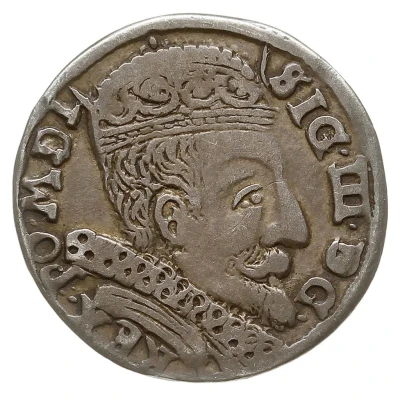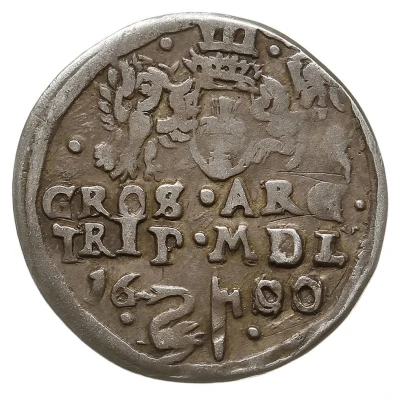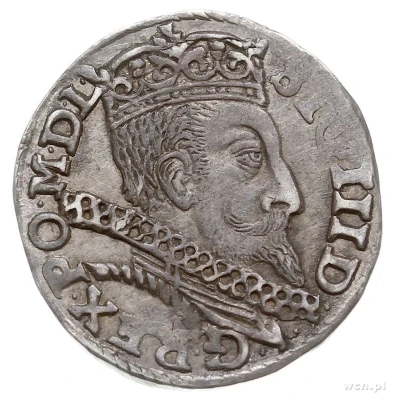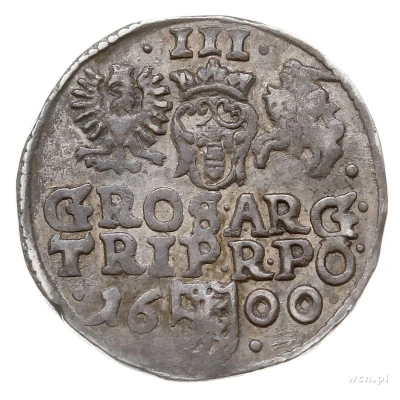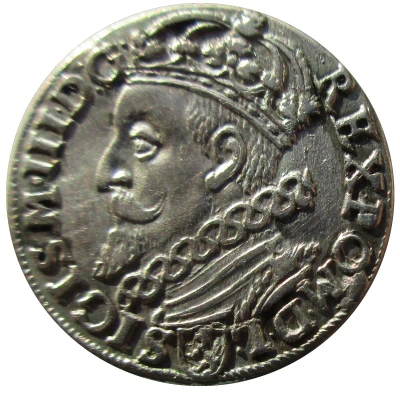
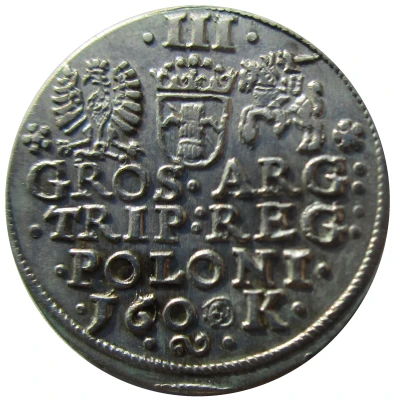

© tdziemia
Trojak / 3 Grosze - Sigismund III Vasa Kraków; bust left
| Silver (.844) | 2.37 g | 21 mm |
| Issuer | Polish–Lithuanian Commonwealth |
|---|---|
| King | Sigismund III Vasa (Zygmunt III Waza) (1587-1632) |
| Type | Standard circulation coin |
| Years | 1600-1601 |
| Value | 3 Groschens (Trojak) (0.1) |
| Currency | First Zloty (1573-1795) |
| Composition | Silver (.844) |
| Weight | 2.37 g |
| Diameter | 21 mm |
| Shape | Round |
| Demonetized | Yes |
| Updated | 2024-10-07 |
| Numista | N#185701 |
|---|---|
| Rarity index | 94% |
Reverse
Inscription in 3 lines. Above, value in Roman numerals, Polish eagle, Wasa arms and Lithjuanian rider. Date and mint mark at bottom
Script: Latin
Lettering:
III
GROS ARG
TRIP REG
POLONI
1600 K
Unabridged legend: Grossus argenteum triplex regni Poloniae
Translation: SIlver three grosze of the Kingdom of Poland
Comment
The Krakow mint produced trojaks (3 grosze silver coins) using a left facing bust of the king and obverse legend starting at 6:00, only in 1600 and for part of 1601.Iger K.00.1.a
Iger K.00.1.b
Pictures: © tdziemia
Iger K.01.1.a
Interesting fact
The Sigismund III Vasa coin was minted during a time of great change in the Polish-Lithuanian Commonwealth. It was the first coin to feature the image of Sigismund III Vasa, who was the King of Poland and Grand Duke of Lithuania from 1587 to 1632. This coin was minted in Krakow, which was an important city in the Commonwealth at the time. The coin's design features the king's bust on the obverse (front) side, and the coat of arms of Poland and Lithuania on the reverse (back) side. The use of silver in the coin's minting was a significant departure from previous coins, which were made of copper or other base metals. This change in material reflects the growing wealth and influence of the Commonwealth during this period.
